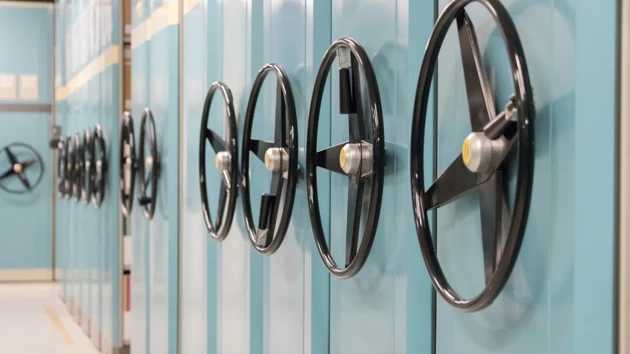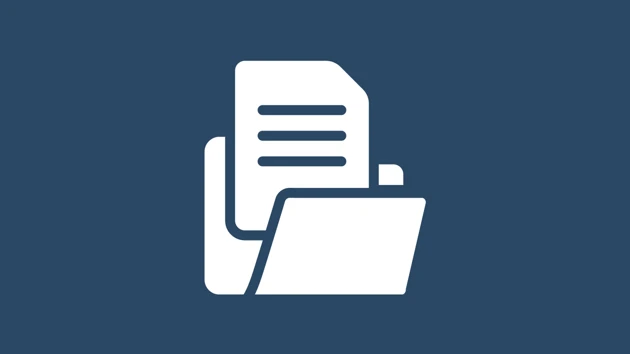Frequently asked questions
What is research material and what does it include?
Research material arises during the research project and can be anything from application documents to the results of an analysis.
The material can be divided into:
- Administrative documents: project plans, grant applications, contracts, project descriptions, correspondence with funding organisations or clients, and financial and personnel administrative documents.
- Primary material: basic material from the research process, such as questionnaires, interviews, survey protocols, experimental protocols, measurement and test results, and X-rays.
- Reporting material: interim reports, final reports and articles.
What is a public document and is primary material considered a public document?
Since Umeå University is a public authority, the principle of public access applies, including for research material. This broadly means that a public document is a document that has been received or drawn up and is stored by the authority (Umeå University).
Once you have published a document, typed up your lab notes or received a response from a questionnaire, these become public documents.
Information in a public document may be classified as secret if it is listed in legislation defining secrecy.
The pages about public documents and secrecy have more information about secrecy in the University’s research activities.
Read about public documents and research data
More information about secrecy and professional confidentiality is available on Aktum (UMU ID required)
Who owns the research material and the primary material?
Umeå University is considered the principal for all research conducted at the authority. The University owns the research material that its employed researchers work with. This means that research material is to be archived at the University. If you leave or change jobs, your research material may not be removed from Umeå University.
How do I archive my research material?
Each department is responsible for archiving its research material. You should always contact the department’s archive coordinator and records manager at the beginning of a project for information about archiving research material.
Managing the different parts of a research project is described in the retention and deletion plan, area of activity 5 Conducting research.
Before starting your research project, you must conduct an information classification and a risk and vulnerability analysis of the project.
Read the Retention and deletion plan – Conducting research (umu.se)
You can also find additional relevant information here on the website for researchers:
Read about information classification
Read about risk and vulnerability analysis
Read about data management plans
The retention and deletion plan states that applications are to be registered into the record. How do you do this?
Applications are to be registered into the department’s records. Contact the department’s records manager to obtain a registration number (dnr). You should keep records updated on a continual basis and not only at the end of the project.
What do I do with the registration number of the item to be registered?
If there are many documents that need to be recorded in a project, it may be appropriate for all documents in the project to be given the same registration number (this is called a “collective case”). In other cases, it is more appropriate for the documents to be given unique registration numbers. The department’s records manager can help determine what is appropriate for your particular case.
Why do I have to archive this? I am the only person who will have use of the document anyway.
Archiving means that material is preserved forever. Not all primary material needs to be archived, but it must be stored securely for a certain period of time before it can be deleted. Erasure means that the material is destroyed.
All primary material must be stored for at least 10, 15 or 17 years after last publication, depending on the type of research or funding body. Once the last publication occurs, the head of department is to decide whether the material is so unique and valuable that it should be archived for the future or whether it should be deleted after the retention period has expired.
Good research practice requires that research documents be archived in accordance with archiving rules.
Read more about good research practice
All my material is on a server at the department or on a supporting system. How do I archive or store it?
Before the project starts and to determine the level of required security for the material in a project, you must conduct an information classification and a risk and vulnerability analysis.
Read more about information classification
Read more about risk and vulnerability analyses
Visit Aktum for more information about storing files (UMU ID required)
If you manage sensitive personal data or information that may be classified as secret, then there are stricter requirements. This includes such things as chemical lab reports.
The material may remain in storage on the secure storage solution or in the secure system in which the material is created for the time it is to be stored.
Read more about secrecy and professional confidentiality on Aktum (UMU ID required)
Read more about processing personal data in research
Is there anything I should think about in terms of organising the data and searchability?
Ensure that there are procedures in place to check the accuracy of research data, that the research data is correct and complete. Make sure to organise research data in a uniform way and use a well-thought-out folder structure. Name the files in a uniform manner and use logical names. Make sure you backup regularly.
Find out more about how you should manage research data
Learn how to organise data when you research
What format should I use to store documents and information?
Digital file formats risk becoming obsolete, so you should choose a format that is suitable for long-term retention. This means that the format should be commonly used, readable by many different computer programmes and well documented, so that it is possible to find a technical specification that explains how the format stores information.
But what is metadata, and what is a metadata standard?
Metadata can be simply described as data about data or information about data.
A metadata standard is a set of rules that tells you how to structure and formulate metadata. It simplifies metadata transfers and increases the searchability of the primary material.
This page on metadata describes in more detail which metadata and which standards should be used in research projects:
How do I deal with analogue primary material?
Documents should be stored and archived in the format in which they were created. Analogue material, such as printed surveys, should be placed in a logical sort order in archive boxes. This can be by name or by personal identity number. Archive boxes can be purchased through the University’s e-ordering system.
Write the following on the archive box:
- the type of document contained in the material, for example surveys;
- which project the documents belong to;
- the period during which the documents were created or received; and
- other information that facilitates searches the archive box.
The department’s archive coordinator can help you with materials for archiving.
What do I do if I believe that the primary material should be deleted?
After the predefined 10, 15 or 17 years have passed, the authority must decide whether the primary material should be deleted or retained. The head of department represents the University when making retention decisions and decides whether the primary material has:
- intra-scientific value;
- value for another research field;
- value for scientific history;
- cultural and historical value;
- historical value related to an individual; or
- significant public interest.
If the head of department determines that the primary material should be deleted, a deletion protocol is drawn up and registered at the relevant department.
How is the deletion protocol filled out?
A deletion protocol is to include the following information:
- the amount of documents or data that has been deleted, which is stated in shelf meters or in data volume;
- the date of the deletion;
- the statute upon which the deletion is based on, which is found in the retention and deletion plan; and
- the head of department’s signature.
Would you like to come in contact with someone about archiving?
If you have questions regarding archiving or are unsure of who the archive coordinator at your department or unit is, contact the Registry and Archives by email at universitetsarkiv@umu.se.


